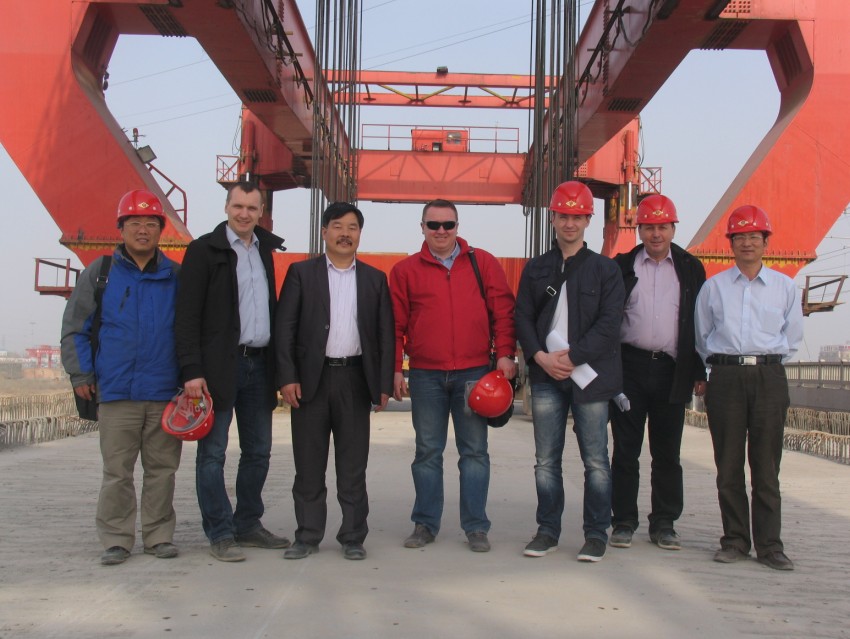Wind resistance measures for overhead launching gantry
Wind resistance measures for overhead launching gantry
Reliable and effective wind resistance meansures have to be taken to ensure a safe operation of overhead launching gantry, especially in the weather with huge wind and in the place with frequent wind weather.

Operator must learn the structure of overhead launching gantry and wind resistance measures, strictly follow operation regulations, then the job can be done well. Wind resistance can be divided into daily wind resistance and typhoon resistance, see the table below:
| No | Working condition | Max wind speedv(m/s) | Wind resistance types |
| 1 | Complete machine crosses piers and moves laterally | 16 | Daily wind resistance |
| 2 | Normal working condition | 22 | Daily wind resistance |
| 3 | Additional safety measures are not necessary in the non-working condition | 40 | Daily wind resistance |
| 4 | Adopt additional safety anchoring measures in the typhoon condition | 50 | Typhoon resistance |
Different measures for different wind resistance types, check the following to find details:
1. daily wind resistance
In the daily working condition (such as the complete machine crosses piers, moves laterally and installs girder segment), because the overhead launching gantry is fixed with piers or pier top block by support legs, at the same time working anchors are set up for support legs, the launching gantry can still install girder segments and construct with suspended girders with the wind speed < 22m/s; the complete machine can still cross piers and moves laterally with wind speed <16m/s, in special working condition, the machine must work in the limit condition for safety.
Electromagnetic hydraulic iron wedge is set up inside of trolley wheels of the overhead launching gantry, when emergency brake is needed because of gust, immediately stop lifting work (or dropping the heavy objects) and moving, cut off power supply for wind resistance iron wedge and stop all operations for the machine. As going off work, move the launching gantry to the ground anchor point, trolley stops at the fixed ground anchor point, lock them with anchors
When the wind speed > 22m/s, the overhead launching gantry should stop working, check whether general anchoring system is in place, move the lifting trolley to the corresponding anchoring points at the front and rear support legs, anchor lifting trolley, other special wind resistance measures for the launching gantry are not necessary.
2. typhoon resistance
When catching a powerful typhoon (wind speed reaches 50m/s), besides daily wind resistance measures, thoroughly anchor the launching gantry. According to the actual condition, pull the wind cable to fix some parts of the lifting trolley. Before the typhoon is coming, replay the original support condition for the front and rear middle support leg whatever condition the launching gantry is. Front and rear middle support legs should be put and fixed on the pier top, lateral connection trusses are respectively set up at front, middle and rear part of the main frame, bottom flange of main frame is stuck on bearing surface of front and rear middle support leg, only allow main frame in vertical plane to turn lightly around horizontal shaft of front and rear middle support leg caused by stiffness. Lifting trolley should move back to the crane support leg point and be anchored.
Besides ways above mentioned, take actual conditions into consideration.






